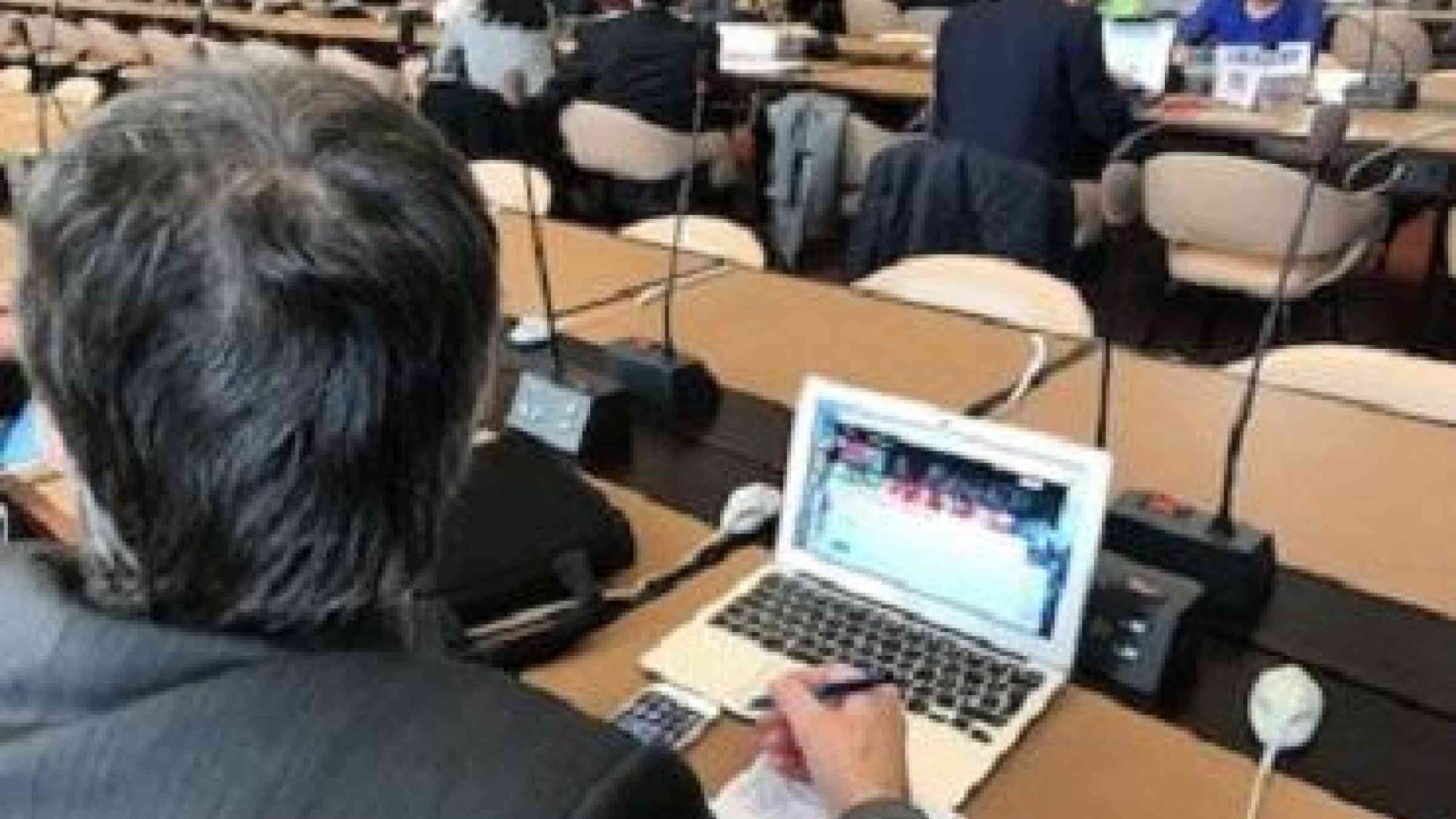
GENEVA, 8 March 2018 - One week after the launch of the new online tool, 50 countries have logged on with the intention of using the Sendai Framework Monitor to report on their disaster losses and efforts to increase national and local strategies for disaster risk reduction.
“Fifty countries have already logged in to the on-line Sendai Framework Monitoring System in one week, which is very encouraging,” it was confirmed today by Ricardo Mena, Chief of UNISDR’s Sendai Framework Implementation Branch.
“And 150 countries have officially informed us about the name of the focal point who will coordinate the reporting process, so we can expect many more countries to log in, in the next couple of weeks,” he said as he opened a two-hour training session in Geneva dedicated to help countries to use the new on-line tool.
The Sendai Framework Monitor system launched last week by the UN Special Representative for Disaster Risk Reduction, Ms. Mami Mizutori, is the first global on-line tool to monitor the implementation of the seven targets of the Sendai Framework, the global plan for reducing disaster losses by 2030, and a key instrument to help achieving the 2030 Agenda for Sustainable Development.
“The Sendai monitoring system is a dual reporting system that not only includes indicators to report on the seven targets of the Sendai Framework but also comprises eleven indicators associated with three main Sustainable Development Goals which are Goals 1-11- 13. The International community has been working for more than 25 years to come up with such a monitoring system and this is quite an achievement when we are all working together to make a more sustainable and resilient development,"said Julio Serge from the UNISDR Bonn office which runs the monitoring process. SDG1 is focussed on poverty eradication, SDG11, resilient cities and communities, and SDG13, climate action.
At the moment, the system has a main global module to allow countries to report data on achievement of five targets agreed by UN Member States which are: reducing mortality from disasters, target (a); reducing the numbers of disaster affected people, target (b); reducing economic losses, target (c); reducing damage to critical infrastructure, target (d); and recording the number of countries with national and local strategies for disaster risk, target (e).
This global tool will be soon completed by two other modules and expanded to cover all seven Sendai Framework targets including target (f) on enhanced international cooperation and target (g) on increased availability of multi-hazard early warning systems.
“We expect to add a new module next May that will include the national defined targets and another one in October, that will allow countries to do their own analytics,” said Julio Serge.
Separate systems will also incorporate the monitoring of the 700 voluntary commitments made by stakeholders at the 2015 World Conference on Disaster Risk Reduction in Sendai, Japan; the Disaster Resilience Scorecard for Cities; and the UN Plan of Action on Disaster Risk Reduction for Resilience.
31 March is the deadline for countries to report on this initial round for 2017 and the results will feed into the first progress report on SDGs report to be presented at the High Level Political Forum in July in New York.
Some 40 government representatives attended the training session today in Geneva at the Palais des Nations. Other trainings are now planned all over the world to better inform governments on how to use the on-line tool.